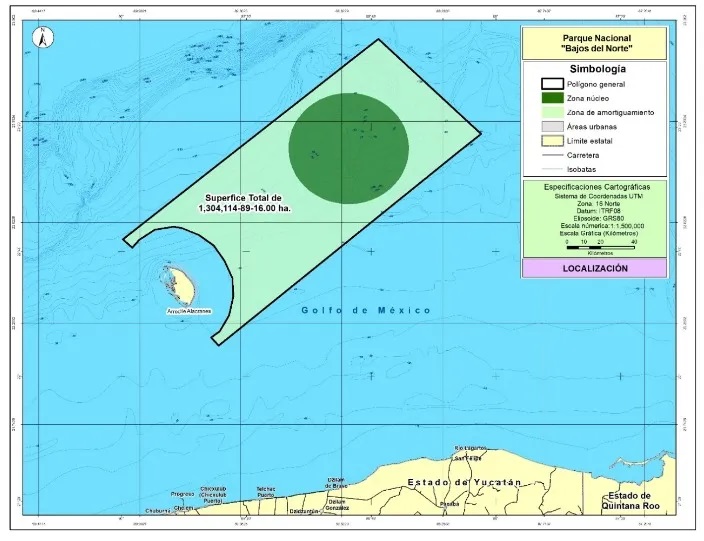Although there is a ban on grouper in Yucatan, it is a species that the International Union for Conservation of Nature (IUCN) has categorized as an endangered species for several years.
This species is significantly affected by poaching, and consequently, its biomass has remained with irregular periods trending downward.
Although the aim is to protect the species in Yucatan with the grouper ban, which only lasts two months (February and March), there is no reliable scientific information to indicate whether this measure has worked.
However, there is hope for the continuity of this species, since the newly created Bajos del Norte National Park (PNBN), located off the coast of the State, aims to protect the reproduction of the grouper.
The Park covers more than 1,304,114 hectares and is a set of reefs located on the Campeche Bank, about 240 kilometers northwest of Progreso, Yucatán.
These reefs are crucial spaces for the reproduction and growth of larvae of species such as the red grouper, the Mayan octopus, and the spiny lobster, with the red grouper being the main species whose restoration this new area aims to achieve.

How was the Park created?
Between 2021 and 2022, a group of scientists embarked on a couple of trips to unravel the mysteries of the depths of that area and thus find a way to preserve the grouper.
The information collected served as the basis for, at the beginning of 2024, this place known as Bajos del Norte to be declared by the Government of Mexico as a new Natural Protected Area, the first 100% marine area in the Gulf of Mexico.
What is evident to ordinary citizens is that currently, it is not so easy to get grouper in fishmongers and markets, and if it were, its price would increase.
TYT Newsroom


